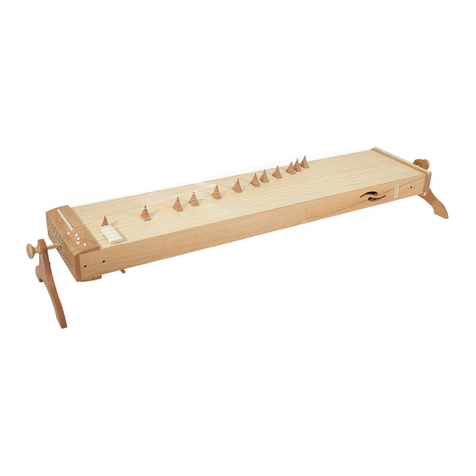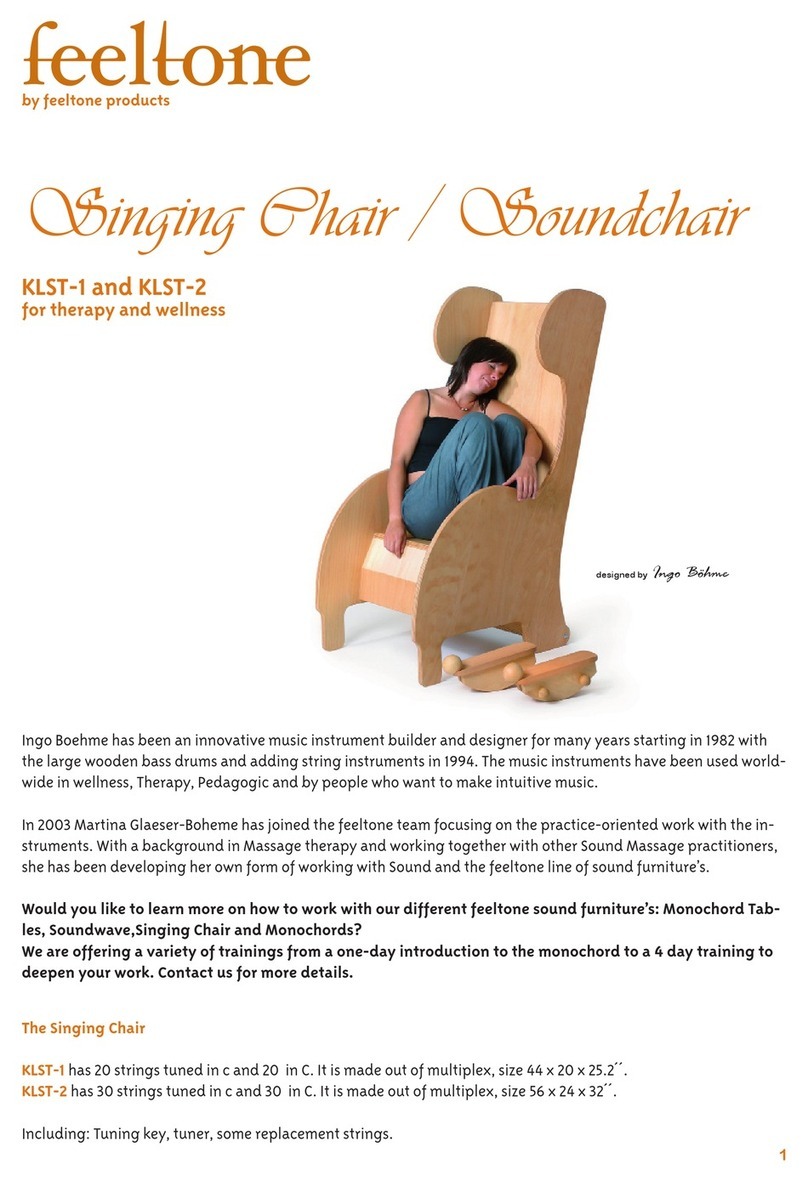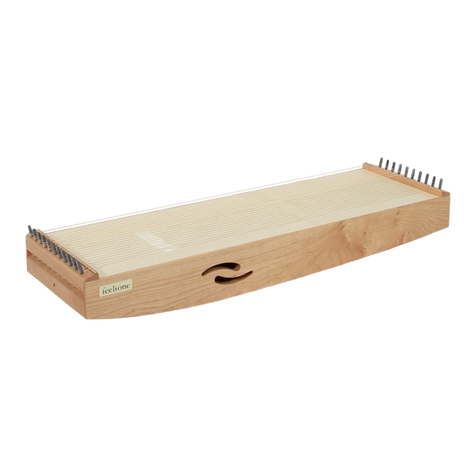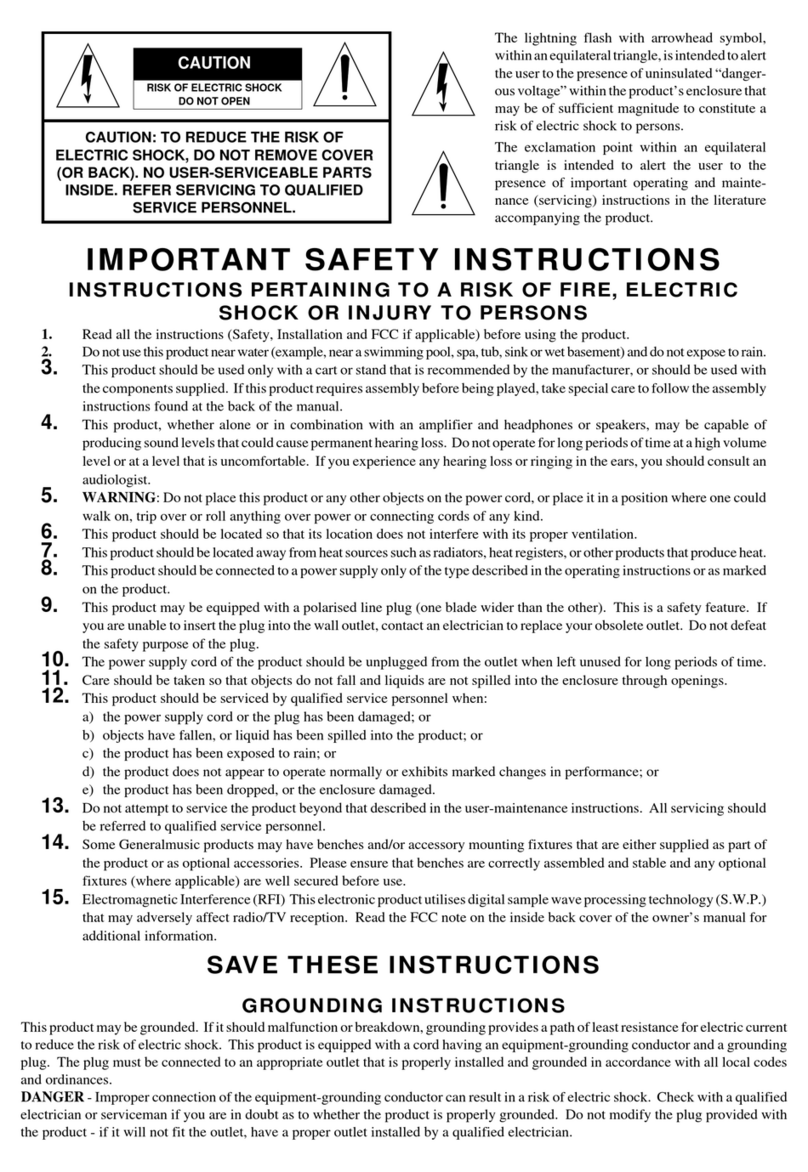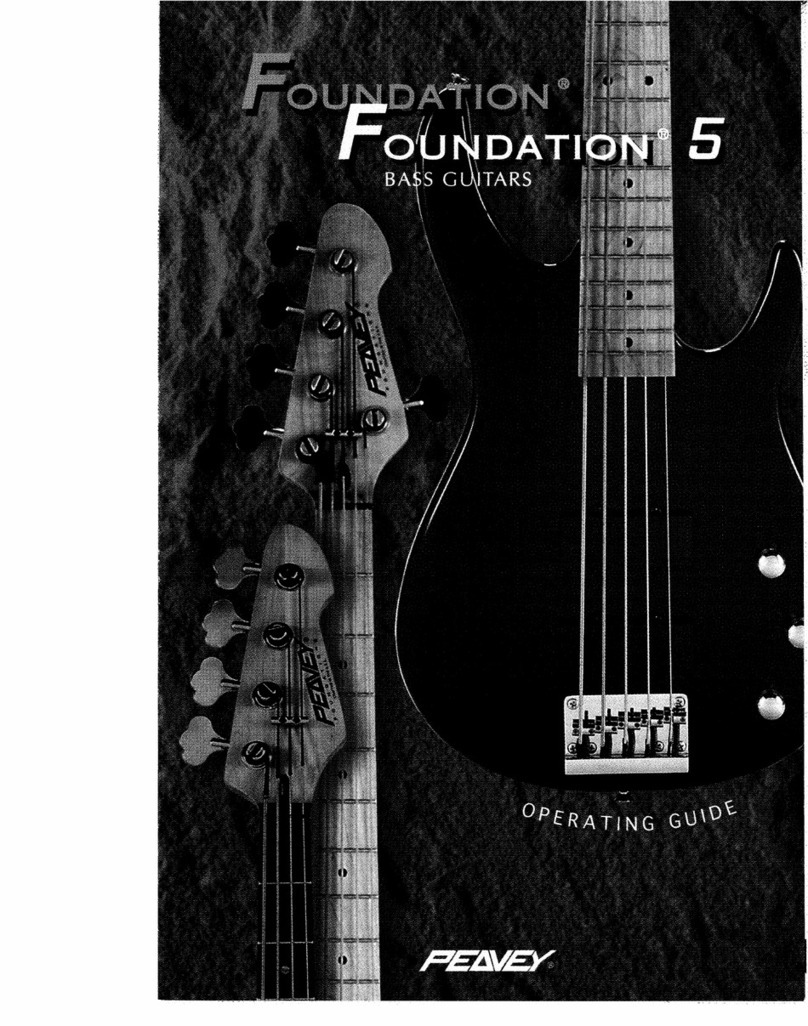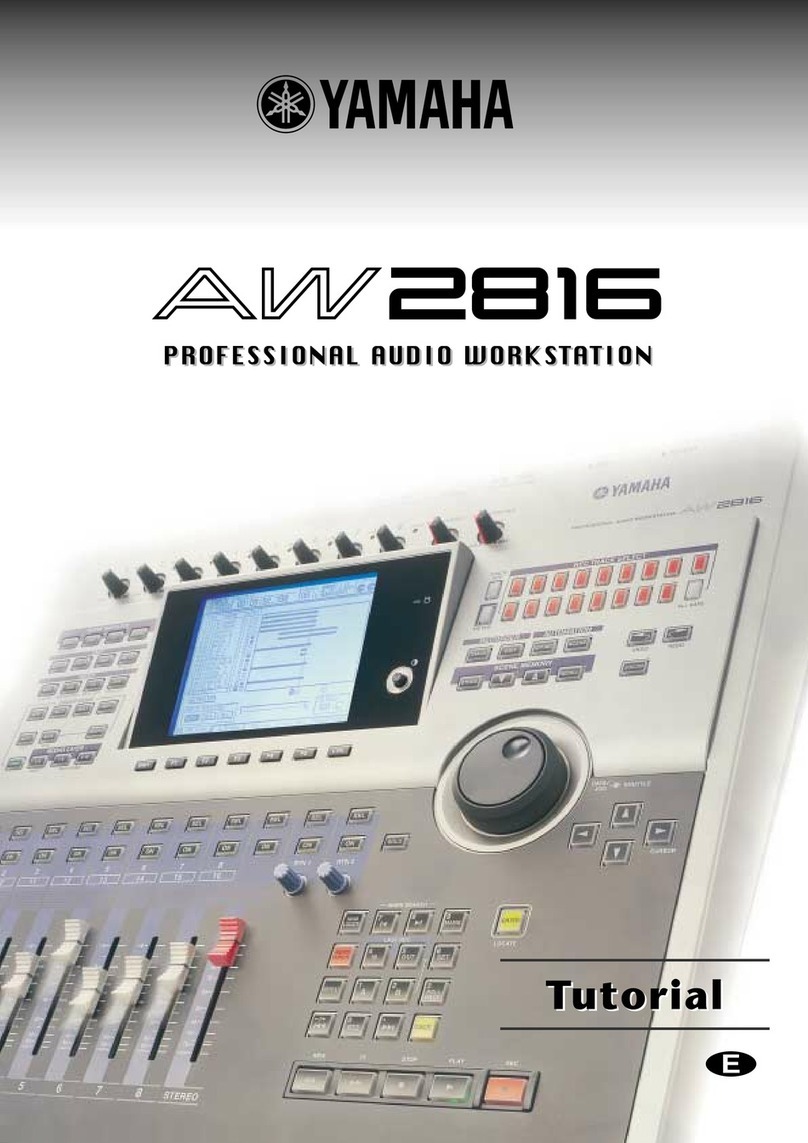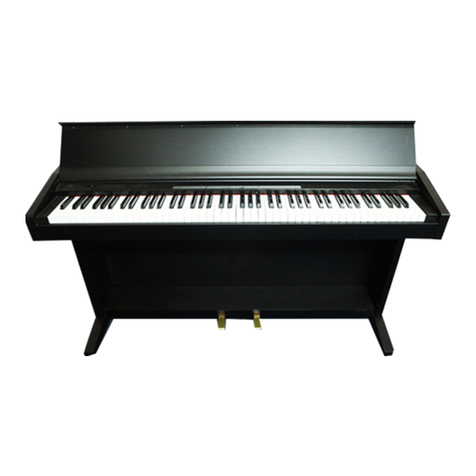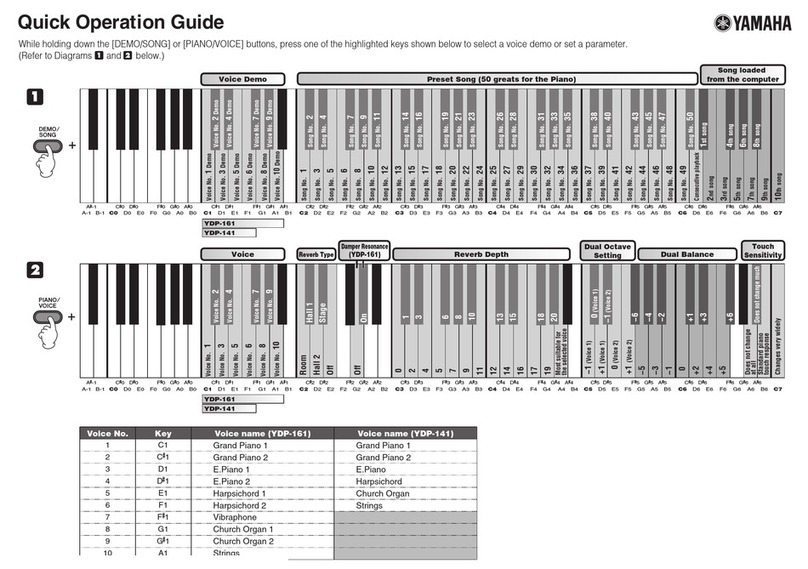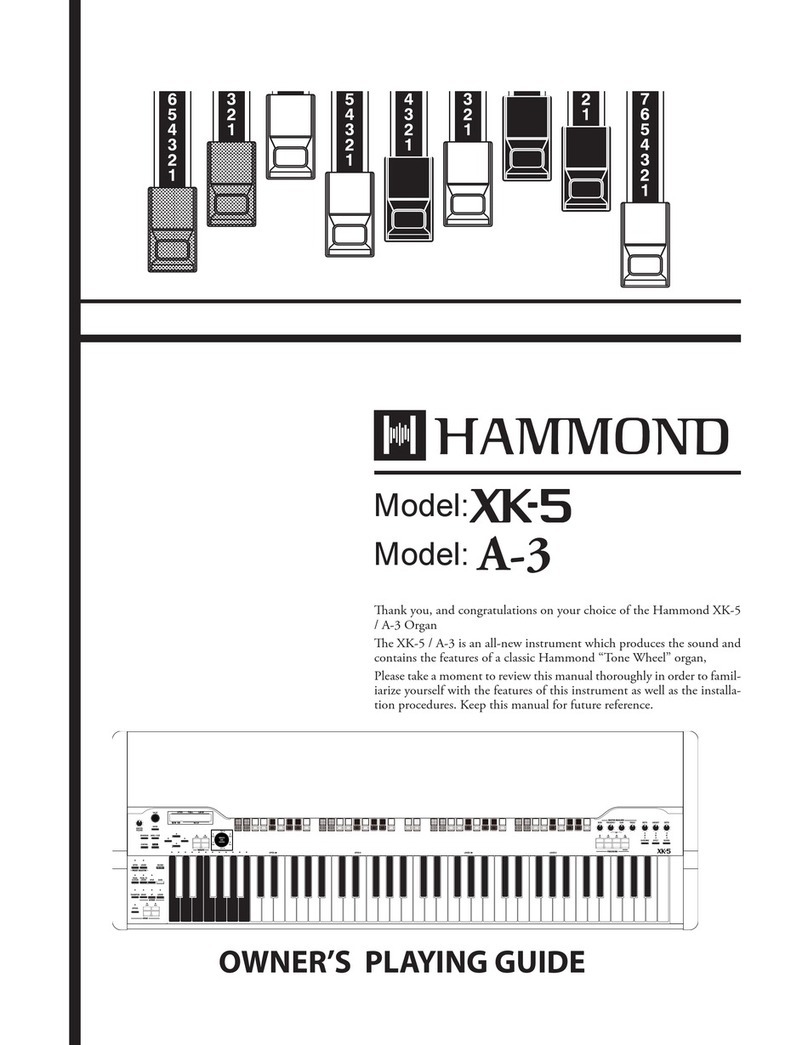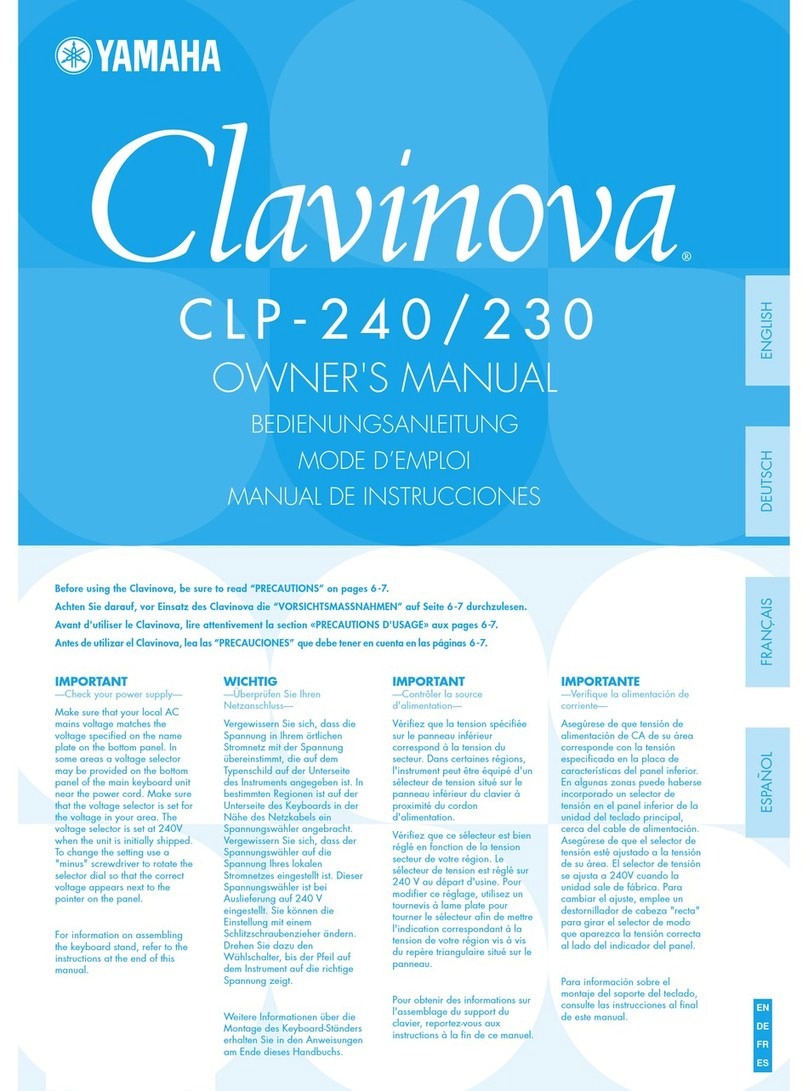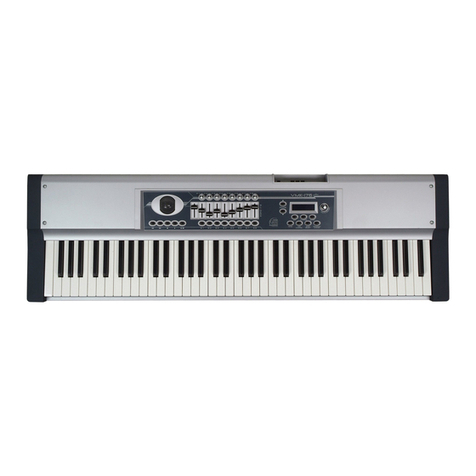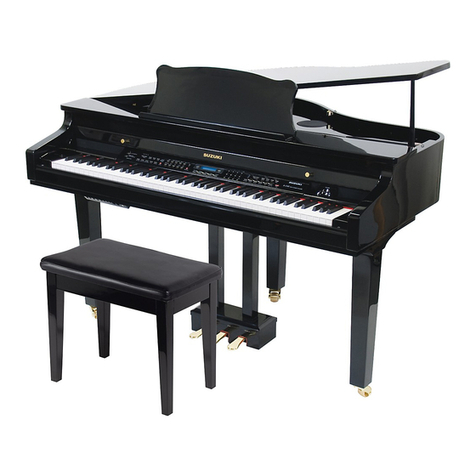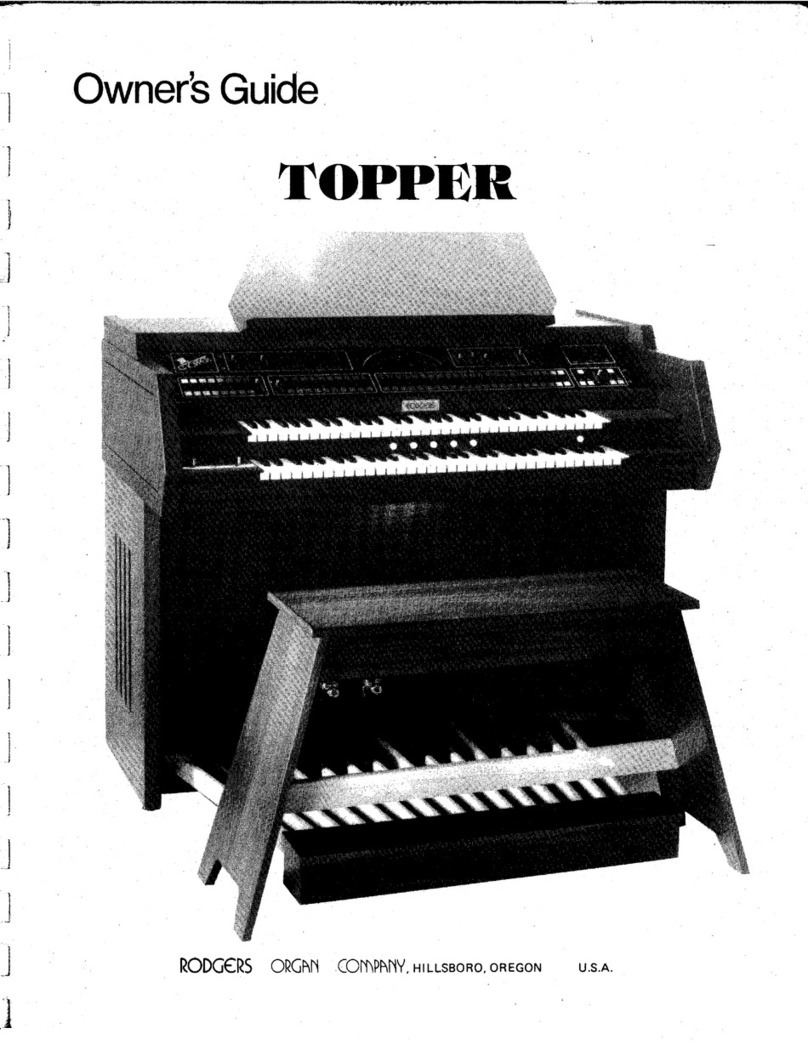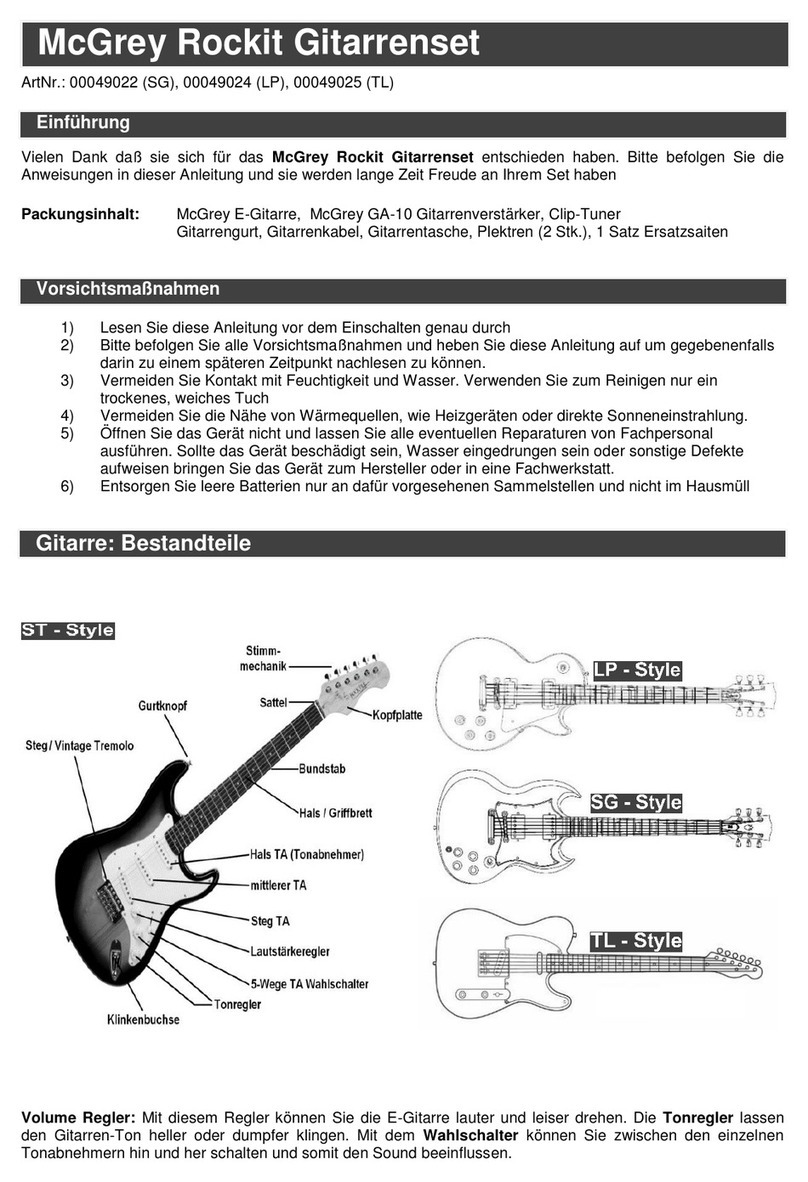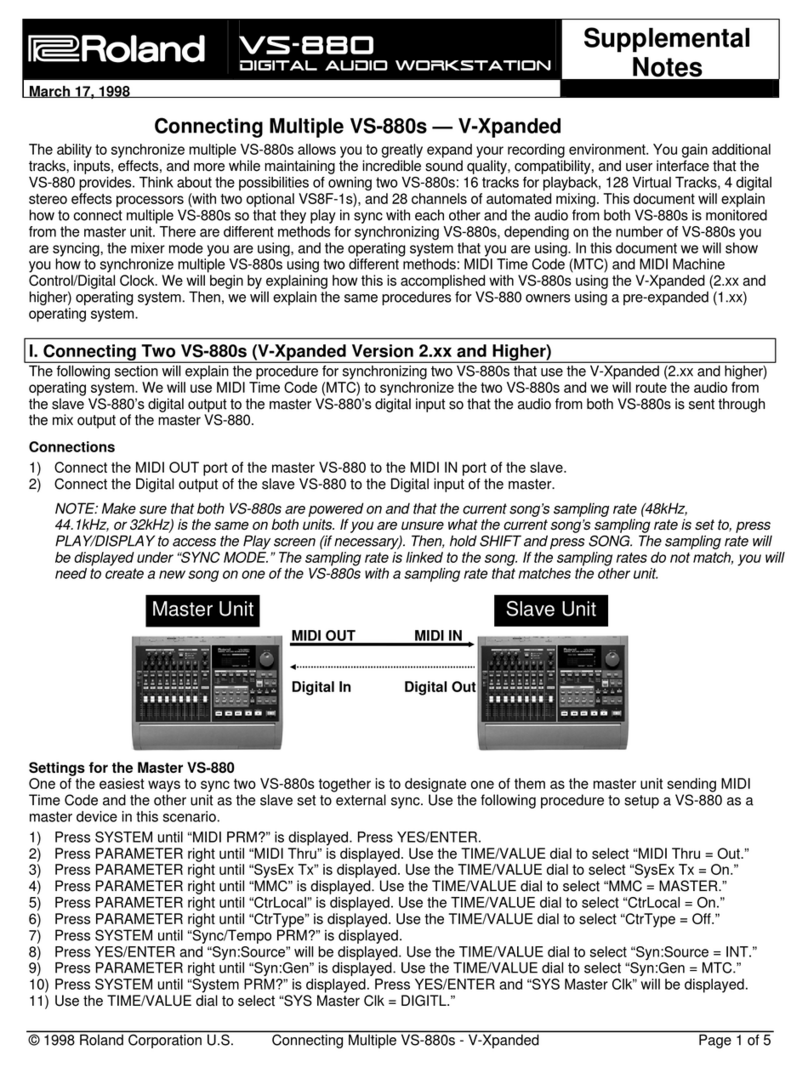FEELTONE Concert Monochord User manual

designed by Ingo Böhme
by feeltone products
1
Concert Monochord
MO-54T for musicians and performer
Our Concert Monochord combines the heavenly overtone rich tunes of the
Monochord with the melodic sounds from the Tanpura drone.
The following text will give you instructions and tips on how to use and care
for your instrument.
Basic configuration
20 overtone and 4 Tanpura strings on one side and 30 bass strings on the
other side,
Ash & cherry wood, size 53 x 12 x 4“
Included: Tuning key, tuner, some replacement strings, 2 short screws with
round wood handle, 1 middle long screw with round wood handle, 1 long
screw with round wood handle, 2 feet, 1 propeller foot, 1 brass sleeves midd-
le, 1 brass sleeve long and 4 washers.

2
Assembly instructions
Vertical standing position
In this position the monochord can be stored space saving. Make sure
fastening screw is screwed in tightly to hold the monochord upright and
the locking mechanism has clicked in. Use the two short screws with the
round wooden handle to mount the feet on both sides of the body of the
monochord.
To mount the propeller use the long screw with the round wooden handle.
Insert the propeller, than one of the washers, the brass sleeve, another
washer and than you can mount the screw at the top of the monochord
body.
horizontal position 1
To bring the instrument into a horizontal position, turn the top propeller
90 degree, loosen the holding screws for the feet ( and the dowels) and
carefully pivot the monochord down so it rests on the turned top propel-
ler as a third foot.
horizontal position 2
For this position you have to remove both feet from the side and attach them to the
bottom and the top. ( as shown in the picture to the right)
The middle wood handle screw and the short sleeve are for the bottom side ( the
side with the nails). Assemble the screw, foot, washer, short sleeve, washer and
insert the screw in the center hole at the nail side. The long wood handle screw and
the long sleeve is for the top side of the monochord, the side with the tuning pegs.
Assemble the long wood handle screw, foot, disk, long sleeve, disk for this positi-
on.
Make sure the feet are tighten securly .

3
This compact and easy to use tuner encompasses the whole range of tones from C1 (32,70Hz) to C8 (4186,01Hz) .
Our recommendation for the tuning is to set the tuner to 432 or 440 Hz (a).
If the tuner is set an another frequency you can change the frequence by pressing the button (d).
This tuner works best when used in a low noise environment.
This tuner displays the notes like this: C,D,E,F,G,A,B, no matter which octave .
For example c‘ and c will be displayed as „C“.
(a) (b) (c) (d) (on/off)
The tuner
The included tuner is designed to be used in a silent environment. If you have to tune in a noisy
environment we recomment a clipon tuner (CA-AW3G) or a contact microphone (CA-CM200).
This allows you to tune independent of the noise level around you.
Both are not included and can be purchased through feeltone.
Recommended tuning c:
The strings can be tuned a full tone higher or lower than the recommended base tone c (b,c,d)
Monochord side:
20 overtone string c
30 braided bass string C
Tanpura-Strings:
4 Tanpura strings in C , c , c , G tuning from the inside C to the outside G bass string.
The bridges on the Monochord side can be moved up or down to change the string length. The default position for
the bridge is approximatley 2 3/4“ from the end.

4
The tuning process
Please notice that you only need to move the tuning key slightly,
one degree at a time to change the note.
For example half a turn of the tuning key will move the tone
up several notes and that could even cause the string to break.
We ship the instrument pretuned. But because strings and wood are reacting with temperature you will need to
tune the instrument upon arrival and after a couple of retunings it will keep its tuning for long period of time.
Let the instrument rest and acclimate to the new surrounding. After the instrument was unpacked and had
rested for a day use the tuning key and the tuner coming with the instrument to tune it.
First tuning:
This example assumes you are tuning the instrument to C.
Put the tuning key onto the first peg , plug the string and look at the tuner
( Which you have turned on and set to 432 or 440Hz) .
-> displayed tone is C and the needle is left from the center or displayed tone is even a deeper note (A# / B)
= the tone is to low, you need to tighten the string
--> to tune to a higher pitch you have to move the tuner clockwise
-> displayed tone is C and the needle right from the center or displayed tone is even a higher note (C# / D)
= the tone is to high, you need to loosen the string.
--> to lower the pitch you have to turn the tuner counterclockwise
Just relax and listen to the sound and you will get into it quickly.
The string is tuned correctly when the needle of the tuner is in the middle and the green LED (b) is on.
Tip 1: If you didn`t meet the tone exactly, loosen the string a little bit and start it again.
Tip2: Try to much the exact tone with a slow and smooth turn of the tuning key.
Continue to tune the other strings. Because the pegs are on the right and on the left side, it might be easier to tune
the pegs on one side, then turn the instrument around and tune the other side.
Second tuning:
We recommend a proper tuning every day for at least two weeks. Don’t worry if you don’t have time every day,
even if you tune every other day it just takes a little bit longer for the instrument to stabilize.
After this period the tone will be stable for a long time and even under changed conditions. Perhaps you think that
tuning is a lot of work. But this procedure helps you to connect to the instrument, to hear the right tone, the overto-
nes and other sound phenomena.
If you use sound in pedagogic or therapeutic settings,
you can use the event of tuning as a kind of awareness test.
For a clear, overtone rich sound, a proper tuning is very important!
The setting for the tuner can be between 440 -432 Hertz (Hz). Use 432 Hz
for a natural harmonic tone. If you are playing this instrument together
with other kind of traditional instruments use 440 Hz to be compatible.
You find more information about this topic in the internet.

5
Tanpura - overtone rich sound, meditative
The typical snare sound with the long lasting drone tone can be used by itself or to accompany the play of the
monochord part of the instrument. You can strum the 4 strings of the Tampura strong or gentley with the tip of the
finger so they start to vibrate. The special designed bridge than allows the strings to develop the snare sound.
The Tuning process for Tanpura
The Tanpura is an east indian Overtone music instrument.
When you play the strings create the typical snare tone.
If you want to maximize the snare effect you can move the Tanpura bridge a little bit to the left or right.
Another thing you can do is to insert a thin string and put the string right under the place where the metal string
touches the bridge.
Playing instructions
Tip If you intend a relaxing effect we recommend to play smooth and steady on the monochord strings to create
an even sound wave. Imagine a small, long wave that rolls back and forth on the beach.
a.) Put one finger (middle or ring finger) of the right (or left) hand in the middle of the top string and
run it smoothly across all strings towards your body. Before the finger reaches the last string, the finger of the
other hand starts at the top string. After a short period bright overtone will apear and resonate with the movement
of your fingers.
b.) After you have established the basic tone you can start varying the tone: Try out what happens when you play
with the tip or the center part of the finger. While keeping the flowing movement of the fingers you can move
one finger to an other position of the string and play there and other overtones will appear. Also the strength and
speed of your motion changes the sound quality.
c.) To avoid getting blisters on your fingers you can either press more lightly or use a leather plectrum.
How to play
Monochord - creates a relaxing overtone rich sound

6
Now aline the peg, so the hole in the peg should point toward the string side.
1.)Take the new string , put it on the nail, insert the pearl and then pull the string through the peg hole on the other
side of the instrument.
2.)Take 1/2 inch of the end of the string and bend it down at a 90 degree angle, using your fingers or a small pliers.
Than pull the string back so the bent down piece of the string points downwards at the peg. You want the first two
winding of the string to go over the bent down piece of string. If this sounds confusing just look at the other pegs
which already have strings on them so you see the end result.
3.)Start to turn the tuning key clockwise to slightly tighten the string. Guide the string so that the first two windings
of the strings will be over the bent down end of the string the next ones below that.
4.)When there is no more slack but the string is not tight yet you can start the tuning process. But first make sure
the string at the end of the pearl is in the notch of the wood.
Now you can start the tuning process (see „the tuning process“).
Important only use the original strings as they are custom made to fit the instrument.
How to replace a broken string
If a string is broken, first remove the string completely.
Keep the pearl as you will need it for the replacement string.
Look at the other strings of the same typ: how often are they
twisted around the pegs? Please turn the peg of the bro-
ken string counterclockwise just as often!
If you don’t do this the peg will be pushed deeper and
deeper in the wood during the tuning process and either the
peg will break or the wood will split.
Check out our videos on YouTube at the feeltone products channel!
Here you will find more information about our instrument,
exampels how to play them, tuning tips and more.
www.youtube.com -> channel enter Feeltone
or
https://www.youtube.com/channel/UCVsN6xeKSfgwZODzRAMt38g

7
Feedback
We love to hear back from you about your experiences, suggestions or comments while working with our instru-
ments.
Care and warranty instructions
Wood is a natural material that is alive and reacts with the temperature and humidity. Treat the instrument like you
would treat a violin, harp or other fine wood string instruments.
All string instruments appreciate an even room temperature to stay in tune. If the air is too hot and dry, the wood
can dry out and it can form cracks!
We recommend to keep the humidity between 50%-60%!!!
Care Instruction and Tips to create the best environment for your Instrument:
Don‘t expose the instrument to extreme temperatures, chose a moderate room temperature.
You can use an air humidifier during the heating period in the winter month or if you live in a dry climate.
Plants in the room with the instrument will help to regulate air moisture.
Important: especially if you have floor heating, never set a wood instrument on the floor as this will destroy
your instrument by drying out the wood which will result into the wood cracking.
Please note that our warranty is voided, if the instrument was exposed to high temperatures or dry air.
Enjoy your New Instrument!

Table of contents
Other FEELTONE Musical Instrument manuals
